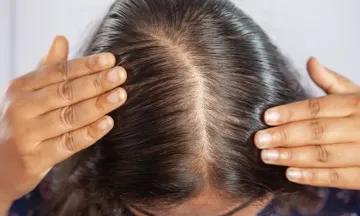How Homeopathy Can Help to Prevent Bone Loss
Osteoporosis is among the most common metabolic bone disorders. It is also among the most difficult to treat. Women are four times more likely than men to develop the disease. Here is an update on how homeopathy can help.
Osteoporosis, or porous bone, is a disease characterised by low bone mass and structural deterioration of bone tissue. It is, in other words, a condition denoted by bone fragility and an increased susceptibility to fractures, especially of the hip, spine and wrist. However, the disorder can affect any bone.
In the disease, the mass of bone is reduced; its composition, however, remains normal, or unaffected. The reduction results in imbalance between the formation and resorption (loss) of bone. While the loss of balance most often occurs with increasing age, osteoporosis is of clinical significance when it leads to structural collapse or fracture - most commonly of the vertebrae, femur (thigh bone), or radius (one of the two bones in the forearm).
Ironically though, the fracture rate in osteoporosis is not closely related to the incidence of the disorder as much as the frequency of falls is.
In simple terms, osteoporosis is a disease in which bones become brittle, and are likely to crack. If the disorder is not prevented or left untreated, it can advance painlessly until a bone fractures.
Symptoms
Osteoporosis occurs most commonly in post-menopausal and elderly women.
The overall symptoms of osteoporosis are deformity, localised pain, and fracture, characteristically seen in age-related bone loss. While the commonest deformity is loss of height due to vertebral collapse, it is hardly ever noticed by the patient because one rarely measures one’s original height. In younger patients having osteoporosis, most of the pain occurs in the back. This is often accompanied by deformity of the chest and protrusion of the manubrium sterni - the upper segment of the sternum. This is, at first, related to an acknowledged strain - moving heavy furniture, for example - with the pain being severe and localised. In addition to this, the vertebrae may be sensitive to touch. Also, anaemia and general ill-health may be present. Most patients have more than one cause of osteoporosis.
Implications
A hip fracture is often a cause for concern; it almost always requires hospitalisation and/or major surgery. Besides, it can interfere with a person’s ability to walk unaided and lead to long-lasting or permanent disability, and also death in certain cases. In addition, fractures of the spine and vertebra can lead to serious consequences including loss of height, severe back pain, and deformity.
Statistics suggests that the disorder is responsible for more than 5 million fractures worldwide annually, including over 300,000 hip fractures; approximately 700,000 vertebral fractures; 250,000 wrist fractures and 300,000 fractures at other sites.
No wonder, osteoporosis is called the ‘silent disease,’ because bone loss can occur without symptoms, or warning signs. As a result, people may not know that they have osteoporosis until their bones become so weak that a sudden strain, bump, or fall, causes a fracture or a vertebra to collapse. Collapsed vertebrae may initially be felt or seen in the form of severe back pain, loss of height, or spinal deformities such as kyphosis or stooped posture.
Prevention
Prevention is much more successful than treatment. In any case, it makes sense to prevent loss of bone density than restore bone density once it is lost. A simple plan of preventative action would involve maintenance or enhancement of bone density. This may often be achieved by consuming adequate amounts of calcium and vitamin D through food or supplements, doing regular weight- bearing exercises, and taking medication on a regular basis.
Healing With Homeopathy
Homeopathy will not reverse existing bone loss but can bring the body into better balance. Homeopathic remedies can relieve bone pain and prevent or heal fractures.
Forty-year-old Smriti presented with symptoms of backache and mild pain all over her body. Our examination revealed that she had already entered menopause. Her complaints suggested early signs of osteoporosis too; so she was advised a bone density test to ascertain the condition of her bones. As suspected, her bone mineral density score turned out to be alarmingly low. Based on her constitution, she was put on the homeopathic remedy suggested by our doctors. A repeat bone density test a year later showed a significant improvement in her bone mineral density score. She was also subjectively and objectively free of all her aches or pains. Today, she exercises regularly at the gym and leads a normal, healthy life.




